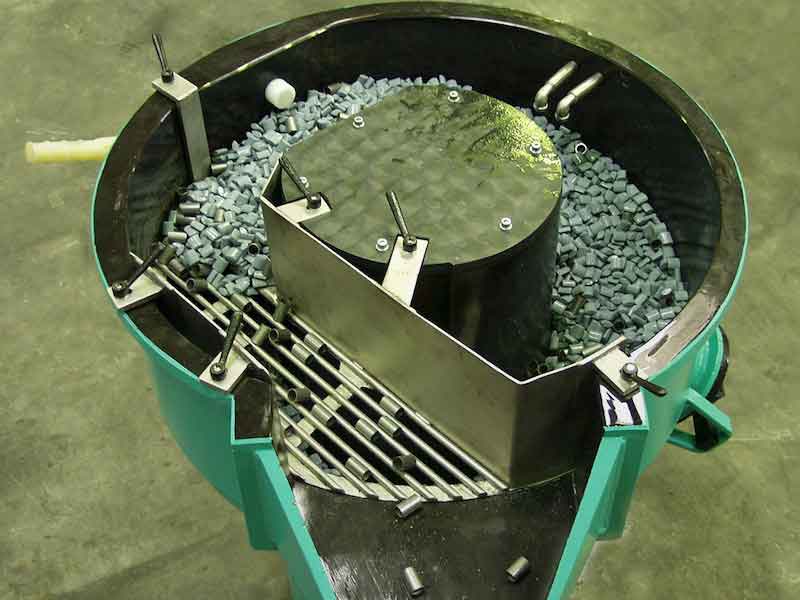As everyone is well aware, the prices for various metals integral to plating have been unstable: at times rising, then again lowering in price.
The trend of years of stable prices has been supplanted by the current up / down pricing scenario. When prices of metals increase, the costs related to finishing consequently also increase. It squeezes a tight market to remain competitive. Metal surcharges have become common similar to transportation fuel surcharges. These added costs are passed on to a wary consumer in a tough business cycle. It would be quite a relief to reduce process costs yet not sacrifice quality.
 Stephen F. Rudy CEFThere are plating jobs that require specific plating deposit thicknesses. These jobs are in a fixed status where it is vital to maintain the correct, as specified thicknesses. Conversely, there are numerous plating jobs that fall under the “bright and shiny” category. It may not be necessary to deposit a previously targeted metal thickness to achieve such a finish. In fact, by maximizing the additive system, dosing appropriately, and conducting effective process maintenance, the deposit thickness can be minimized. This will reduce the cost of plating while enabling a set job to remain competitively priced.
Stephen F. Rudy CEFThere are plating jobs that require specific plating deposit thicknesses. These jobs are in a fixed status where it is vital to maintain the correct, as specified thicknesses. Conversely, there are numerous plating jobs that fall under the “bright and shiny” category. It may not be necessary to deposit a previously targeted metal thickness to achieve such a finish. In fact, by maximizing the additive system, dosing appropriately, and conducting effective process maintenance, the deposit thickness can be minimized. This will reduce the cost of plating while enabling a set job to remain competitively priced.
Another surface treatment process focuses on improving the surface condition of the basis metal. In this approach, defects on the surface are removed or minimized, achieving a smooth, lustrous condition. This surface conditioning process employs one of the most popular of the mass finishing cycles, namely burnishing. When considering economics related to the process cycle, burnishing, if applicable, can provide a significant economic benefit.
Any metal, such as stamped, drawn, or molded, can be the right candidate for burnishing. Benefits to burnish them include:
- Bulk processing whereby individual handling part each part is not required
- Produces a bright, smooth, highly reflective surface.
- Removes organic soils and scales, facilitating effective surface preparation before plating.
- Surface metal removal can be minimal.
- The focus is on honing and removing surface imperfections.
 Photos courtesy of Rosler; visit https://us.rosler.com/us-en
Photos courtesy of Rosler; visit https://us.rosler.com/us-en
All of these benefits combine to improve the brightness and leveling of the part before it is plated. In the case where burnishing is applicable, the plating thickness can be decreased. The following example explains why.
Burnishing deals with the distance between high and low points on the surface, or more commonly peaks-to-valleys. The result is instrumentally measured and interpreted as a quantitative value, the RMS (root mean square) value. A lower RMS value corresponds to flatter or more leveled surface. There are two classifications of burnishing:
- Burnishing. Parts are processed with media (ceramic or porcelain) or without (part-on-part).
- Ball Burnishing. Softer metals such as aluminum and brass are processed with case hardened steel or stainless steel media, producing maximum brilliance.
Either burnishing cycle can be performed just before transfer to plating. In this case, the burnished parts are already clean, bright, and in a ready-to-plate condition. A short soak cleaning to remove burnishing compound residue and any corrosion inhibitor from the surface This is followed by an acid activation prior to plating. A cost reduction in the process is achieved by eliminating a portion of the typical cleaning and surface activation preplate times in the overall cycle. Sometimes the parts can be burnished after plating to achieve the desired brightness. This step saves on plating brightener consumption along with reducing plating time (less metal consumed, increased production throughput). Parts that favor barrel processing are readily transferred with a minimum of handling between steps.
Burnishing compounds are available as liquid and powder concentrates. Either form is prepared as a dilute working solution (0.5 to 1.0 vol% or 1 to 4 oz/gal), as the example concentrations indicate. A good burnishing treatment provides these benefits:
- A lubricating film for action between parts and media to parts. Lubricity is very important.
- Water hardness tolerance
- pH buffered for the application, such as sensitive metals
- Rust and corrosion protection on steel
- Flexible foaming characteristics
The working solutions are prepared and can be used to condition parts in most mass finishing equipment, such as barrels (horizontal and oblique) and vibratory tubs. The application in a tub can be with the loading of the solution, parts, and media, along with sealing the drain. Another form is to meter in the solution per cubic ft/hour, as a single pass or recycled, typically in a vibratory tub.
Approximately 0.04 oz of nickel is deposited per amp hour. By reducing the plating time for burnished parts by 25% or more, realistic cost savings can be achieved. This especially benefits the processing of small parts in bulk. Additional savings include reduced electrical power consumption for plating, less requirement for plating brighteners, along less surface preparation time.
There are several benefits to reducing the cost of surface preparation and plating, where the use of burnishing is an appropriate surface treatment. By improving surface quality, burnishing may also improve corrosion protection and surface life of finished parts. This does depend on the type of exposure parts are subjected to. Depending on the application and testing on parts, it may be of benefit to plate less and burnish more.
Stephen F. Rudy, CEF, is president of Chem Analytic, and has written extensively about the finishing industry. Visit www.chemanalytic.com or call him at 917-604-5001.




























